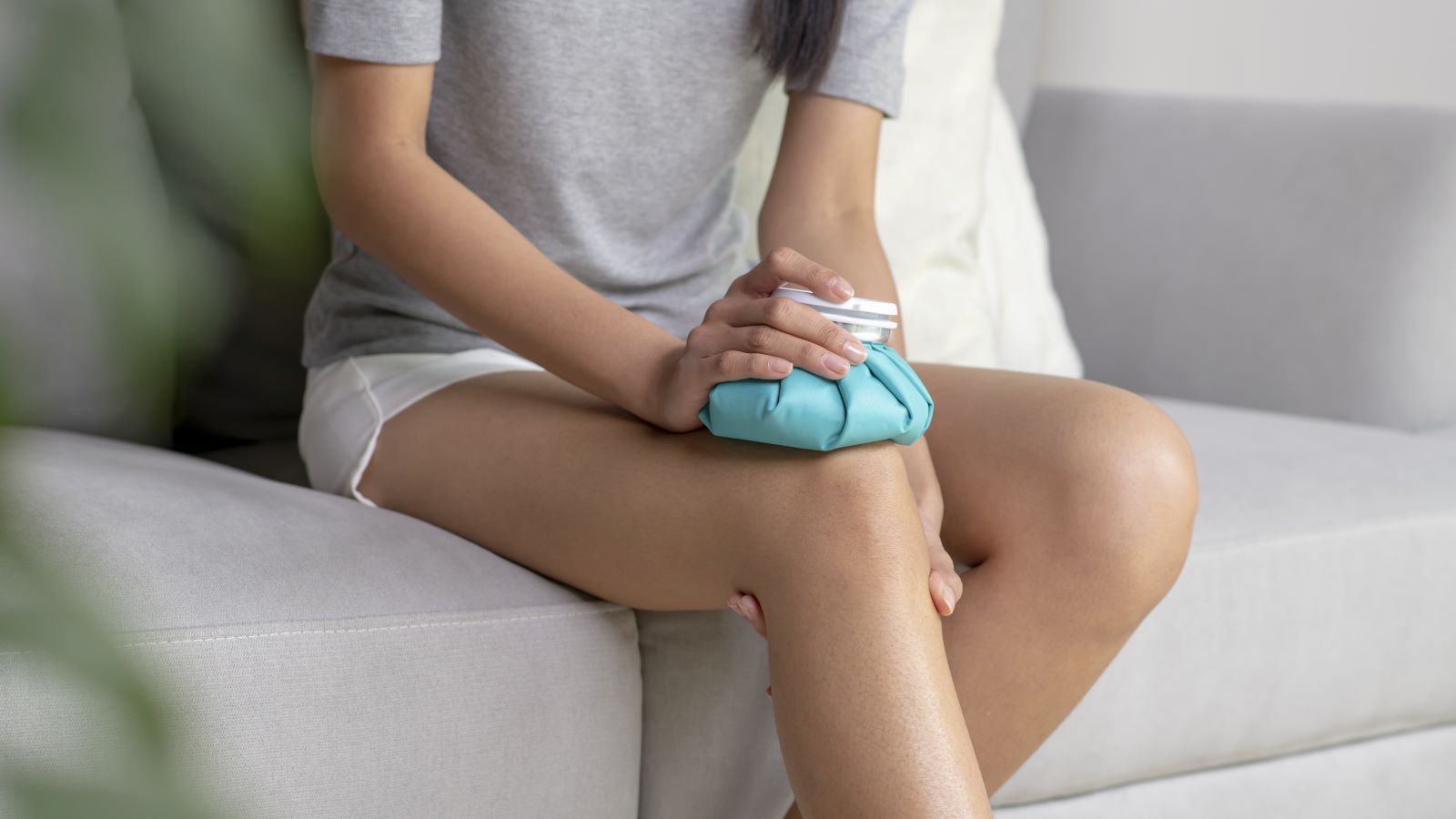<< Back
3 Ways to Help Ease Swelling

July 12, 2025
Swelling can happen for a lot of reasons – an injury, surgery, a chronic condition like arthritis, or even after a long day on your feet. While swelling is a part of your body’s natural healing response, it can also be uncomfortable.
Fortunately, there are a few simple ways to help manage and ease swelling without medication. Melania Anderson, total joint program manager at Hartford Hospital’s Bone and Joint Institute, shares three strategies that can make a difference.
1. Rest and elevate
When swelling strikes, your first move should be to slow down. Resting gives your body time to heal.
Elevating the swollen area – ideally above the level of your heart – helps fluids move away from the area. Try propping up your leg with pillows or resting your arm on a cushion.
“Elevation can be really effective to reduce swelling naturally,” Anderson says. “It helps the body reabsorb that extra fluid.”
This simple step helps ease swelling and can even shorten recovery time after an injury or procedure.
2. Apply ice – carefully
Ice is a go-to tool to calm swelling. It helps by narrowing blood vessels and decreasing fluid buildup. Anderson recommends applying an ice pack, wrapped in a towel, to the swollen area for about 15 to 20 minutes at a time.
But be sure to give your skin a break between icing sessions to avoid frostbite. And if you’re unsure how often to ice, or if swelling doesn’t improve, check in with your provider.
> Related: Can Cold Plunges Improve My Health?
3. Try compression
Compression garments like sleeves, socks or wraps can help control swelling by gently squeezing the area and improving blood flow. But they need to fit just right – too tight, and they could cause more harm than good.
“If swelling is persistent, a provider might recommend compression as part of a treatment plan,” Anderson says.
When to call your doctor
Swelling that doesn’t improve, gets worse, or comes with redness, warmth or pain could signal something more serious, like an infection or a blood clot. If you notice any of these signs, it’s important to contact your provider.
When swelling happens, a few simple steps – and knowing when to get help – can make all the difference.